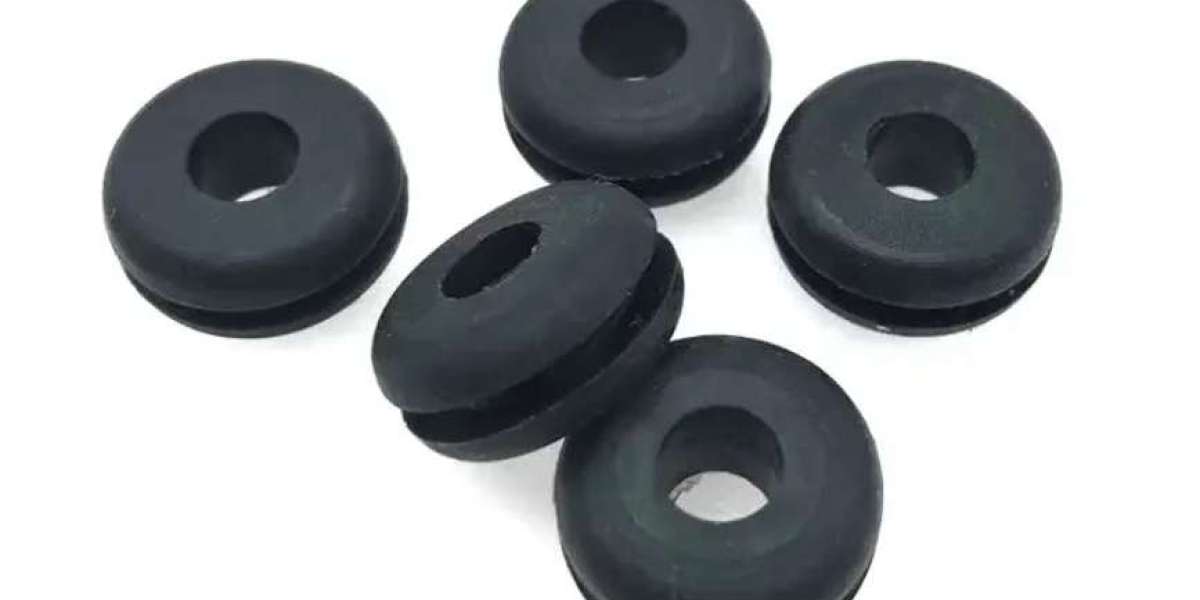In the realm of industrial applications, rubber grommets play a pivotal role in providing insulation, vibration damping, and protection against harsh environmental conditions. The performance of these small yet crucial components is heavily dependent on the materials from which they are made. When subjected to high temperatures, the characteristics of rubber grommets can significantly vary, impacting their durability, resilience, and overall functionality.

Rubber Grommet Materials: A Spectrum of Performance
Rubber grommets are manufactured from a variety of materials, each with its unique set of properties. The selection of the appropriate material is contingent upon the specific application requirements, particularly when it comes to heat resistance. Materials such as natural rubber, silicone, neoprene, nitrile, and EPDM are commonly used for their distinct characteristics.
Characteristics of Rubber Grommets
Rubber grommets are designed to be flexible, durable, and resistant to various environmental factors. Their characteristics include:
Elasticity: The ability to return to their original shape after deformation.
Tensile Strength: The capacity to withstand pulling forces without breaking.
Chemical Resistance: The ability to resist degradation from exposure to chemicals.
Temperature Tolerance: The range of temperatures within which the grommet can operate without losing its properties.
High-Temperature Rubber Grommets: A Closer Look
When rubber grommets are exposed to high temperatures, their performance can be compromised if not specifically designed for such conditions. High-temperature rubber grommets are engineered to maintain their structural integrity and functionality even when subjected to elevated temperatures. These grommets are typically made from materials that exhibit excellent heat resistance.
Silicone Rubber Grommets
Silicone rubber grommets are known for their outstanding heat resistance, making them ideal for applications where high temperatures are a common factor. They can operate effectively in temperatures ranging from -60°C to 200°C, retaining their flexibility and resilience.
Neoprene Rubber Grommets
Neoprene is another material that offers good resistance to heat, ozone, and chemicals. It is commonly used in applications that require exposure to oils, solvents, and weather conditions. Neoprene rubber grommets can perform well in temperatures up to 130°C.
Nitrile Rubber Grommets
Nitrile rubber grommets are recognized for their oil and heat resistance. They are suitable for applications involving contact with mineral oils and can withstand temperatures up to 100°C.
EPDM Rubber Grommets
Ethylene propylene diene monomer (EPDM) rubber grommets are favored for their resistance to heat, weathering, and aging. They are often used in automotive and construction applications, where they can operate in temperatures up to 150°C.
Zhengli's Commitment to High-Quality Rubber Grommets
Zhengli, a leading manufacturer of custom rubber parts, has been at the forefront of the industry since its inception in 1993. With a commitment to excellence and a focus on quality, Zhengli has established itself as a reliable source for high-performance rubber grommets.
The company's journey began with a small factory and a handful of machines, but through hard work and dedication, Zhengli has expanded its operations and capabilities. The introduction of Andong Wang, who joined the company after completing his studies, brought a fresh perspective and a focus on marketing, further enhancing the company's growth.
Zhengli's materials department, established in 1999, ensures that only the highest quality rubber materials are used in the production of their grommets. The company's adherence to ISO 9001 certification since 2012 is a testament to its commitment to quality and customer satisfaction.
Adapting to Changing Market Conditions
The rubber grommet industry is dynamic, with constant advancements in material science and manufacturing techniques. Zhengli has shown an unwavering commitment to adapting to these changes, seeking new opportunities, and staying ahead of the curve.
The company's ability to provide high-quality rubber products and services, even in the face of market fluctuations, is a testament to its resilience and dedication to its core values. Zhengli's focus on innovation and customer service has allowed it to maintain a strong presence in the industry for over three decades.
Conclusion
The performance of rubber grommets in high-temperature environments is a critical factor in their selection and application. Materials such as silicone, neoprene, nitrile, and EPDM offer varying degrees of heat resistance, ensuring that there is a suitable grommet for every high-temperature application. Zhengli's dedication to producing high-quality rubber grommets, coupled with its adaptability and commitment to innovation, positions it as a trusted partner for industries requiring reliable and durable rubber components.
As the industry continues to evolve, the demand for high-performance rubber grommets will only increase. Zhengli's ongoing commitment to excellence and quality will undoubtedly play a significant role in meeting these demands and pushing the boundaries of what is possible with rubber grommet materials.








